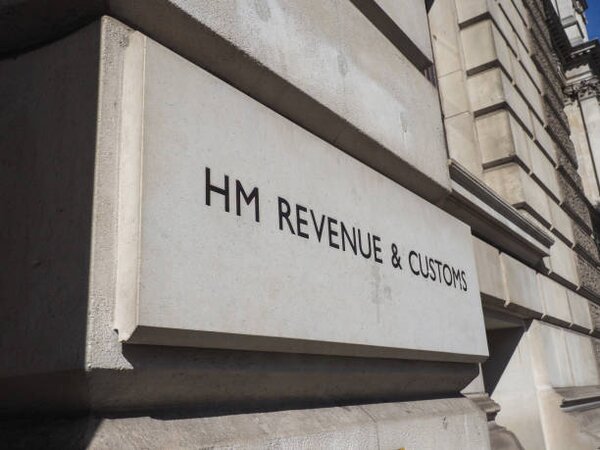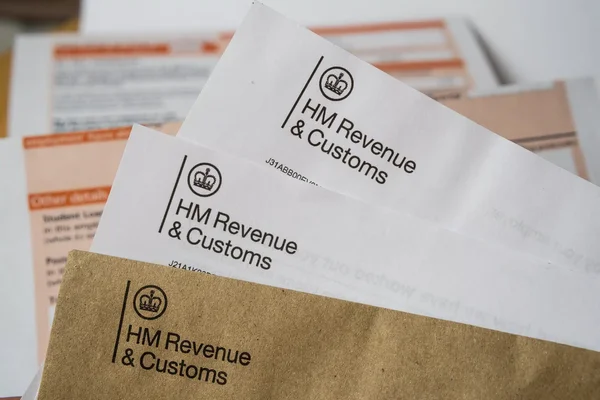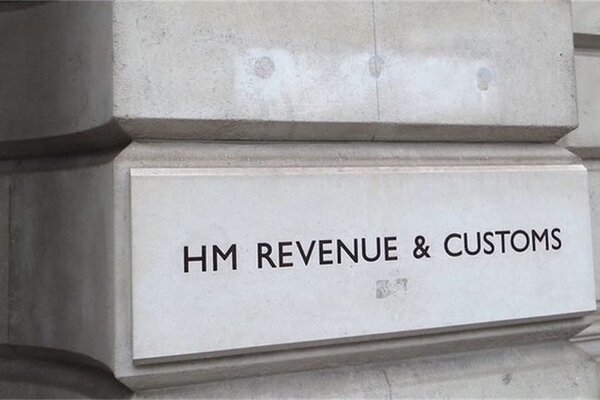A Deep Dive into the Topic
Think you’ve paid too much tax? You’re not alone!
Many people overpay tax through PAYE and don’t even realise it. But the good news is, you can claim a tax refund and get your money back.
Your P60 is key to checking if you’re owed a refund. Whether you’ve changed jobs, been on the wrong tax code, or left the UK, there are several ways to claim back overpaid tax.
In this guide, we’ll walk you through 7 simple steps to help you get your refund quickly and hassle-free. Let's dive in!
Who Can Claim a P60 Tax Refund?
Not sure if you're owed a P60 tax refund? You’re not alone! Many people overpay tax without realising, and the good news is, you might be able to claim it back. Here’s who should check:
- PAYE Employees – If you’re on Pay As You Earn (PAYE) and your employer deducted too much tax, you could be due a refund. This often happens if you didn’t use your full tax-free personal allowance or had a change in income.
- People Who Changed Jobs – If you had more than one employer in a tax year, things can get messy. You may have paid too much tax because HMRC didn’t adjust your tax code properly.
- Those on Emergency Tax Codes – Ever noticed a strange tax code on your payslip? If HMRC put you on an emergency tax code, you probably overpaid tax, and you can claim it back.
- Individuals Who Left the UK – If you moved abroad but worked in the UK and paid income tax, you might be eligible for a P60 tax refund. HMRC won’t chase you down to return your money, you have to claim it!
- Retirees & Pensioners – If your pension income changed, you may have been taxed at the wrong rate. Checking your P60 and tax code could mean a nice refund.
Not sure where to start? Our free Pie Tax app makes claiming your P60 tax refund quick and stress-free, so you can get your money back without the hassle!
Step 1 – Check Your P60 for Overpaid Tax
Your P60 is a key document when it comes to claiming a tax refund, but many people don’t even check it! If you’ve paid too much tax, this is the first place to look.
- What’s on a P60? – Your P60 is an annual summary showing your total earnings, tax paid, and National Insurance contributions for the tax year. It’s issued by your employer at the end of the tax year if you were employed on 5 April.
- Compare Your Tax Paid – Use HMRC’s tax calculator to check if the tax deducted from your wages matches what you actually owed. If you paid too much tax, you could be due a refund.
- Common Overpayment Reasons – There are a few common reasons people overpay tax: an incorrect tax code, having more than one job, moving between jobs, or not claiming job-related expenses like work uniforms or travel costs.
Checking your P60 is a simple step that could lead to a nice tax refund, so don’t forget to review it carefully!

Step 2 – Verify Your Tax Code
Your tax code is what tells HMRC how much income tax to take from your earnings. If it’s wrong, you could be paying too much tax (or too little, which can lead to an unexpected bill later!).
- Why Tax Codes Matter – Your tax code determines how much of your income is tax-free and how much is taxable. If it’s incorrect, you might have overpaid tax without realising. This is especially common if you’ve changed jobs, had more than one employer, or received emergency tax deductions.
- How to Check Your Tax Code – You can find your tax code on your P60, P45, or most recent payslip. It’s usually a mix of numbers and letters (like 1257L for most people). If something looks off, it’s worth investigating.
- Updating Your Tax Code – If you think your tax code is wrong, contact HMRC to get it updated. You can do this online through your Personal Tax Account or by calling HMRC directly. Fixing it now helps avoid future overpayments and ensures you don’t need to claim a refund later.
A quick tax code check could save you money, so don’t skip this step!
Step 3 – Claim Your P60 Tax Refund Online
If you’ve overpaid tax, the quickest way to get your refund is by claiming online through HMRC. No waiting for paperwork, just a few clicks, and you’re on your way to getting your money back.
- Fastest Way to Apply – Head to your HMRC Personal Tax Account and submit a tax refund claim. This is the easiest and fastest method, with most refunds processed in just a few days.
- What You’ll Need – Before you start, make sure you have your P60 (to check tax paid), National Insurance number, and bank details for the refund to be sent directly to your account.
- Processing Time – Once submitted, online tax refunds usually take 5–10 working days to land in your bank account. Much faster than a paper claim!
Claiming online is the quickest way to get what’s yours, so if you’re owed a P60 tax refund, don’t wait, apply now!

Step 4 – Submit a Paper Tax Refund Claim
Sometimes, an online claim isn’t an option, and you’ll need to go old school with a paper tax refund form. While it takes longer, it’s still worth doing if you’re owed money!
- When a Paper Form is Needed – If you’re claiming for previous tax years, have a complicated tax situation, or are leaving the UK and need to reclaim overpaid tax, a paper claim may be required.
- Forms to Use – The type of form depends on your situation:
- P85 – If you’ve left the UK and want to claim a tax refund.
- R40 – If you’re reclaiming tax on savings interest.
- Self-Assessment Forms – If you file a self-assessment tax return, your refund is processed through that.
- How Long It Takes – Paper claims take up to 8 weeks (sometimes longer if HMRC is busy). If you can, applying online is always faster.
If you’re owed a refund, don’t let the wait put you off. It’s still your money, and claiming it is worth the effort!
Step 5 – Claim Tax Refunds for Previous Years
If you’ve overpaid tax in the past, don’t worry, it’s not too late to get your money back! HMRC lets you claim refunds for previous tax years, so it’s worth checking if you’ve missed out.
- How Far Back Can You Claim? – You can claim a tax refund for up to four tax years. So, if you think HMRC has taken too much tax in any of those years, you still have time to get a refund.
- Common Missed Refunds – Many people don’t realise they could claim back overpaid PAYE tax, unclaimed work expenses (like uniforms or travel), or pension contributions that were incorrectly taxed.
- How to Check If You’re Owed Money – Log into your HMRC Personal Tax Account and use their refund checker to see if you’re eligible. If you’re unsure, using a tax refund service can help ensure you don’t miss out on money you’re owed.
Don’t let your refund expire. if HMRC owes you, make sure you claim it before the deadline!
Step 6 – Track Your Tax Refund Status
So, you’ve submitted your P60 tax refund claim, but now what? Waiting for HMRC to process your refund can feel like watching paint dry, but luckily, you can track its progress online.
- How to Check Progress – The easiest way to track your refund is by logging into your HMRC Personal Tax Account. Here, you’ll see updates on whether your claim has been approved and when to expect payment.
- Processing Times – If you applied online, most refunds are processed within 5–10 working days. However, if you submitted a paper claim, it could take up to 8 weeks, so patience is key.
- What to Do If Your Refund Is Delayed – Common reasons for delays include security checks, incorrect bank details, or missing documents. If your refund is taking longer than expected, contact HMRC to check the status.
Want an easier way to stay on top of your tax refund? Our Pie Tax app helps you track your claim hassle-free, so you know exactly when your money is on the way!

Step 7 – Avoid Overpaying Tax in the Future
Nobody likes paying too much tax, so why not take steps to stop it from happening again? A little tax planning can help you keep more of your money and avoid waiting for refunds.
- Check Your Tax Code Regularly – Your tax code affects how much income tax is deducted from your pay. A wrong code could mean you’re overpaying tax without realising. Review your P60, payslips, or log into your HMRC Personal Tax Account to make sure everything is correct.
- Claim Job Expenses & Tax Relief – If you pay for work-related expenses like uniforms, tools, or travel, you might be able to claim tax relief. Many people miss out on refunds simply because they don’t realise they can claim!
- Use a Tax Refund Service – If tax rules feel overwhelming, services like Pie Tax can help track your refunds, check for overpayments, and make sure you never leave money behind.
A quick tax check now could mean more cash in your pocket—and fewer surprises from HMRC!
Final Thoughts
Nobody wants to leave money with HMRC when it should be in their own pocket!
If you’ve overpaid tax, checking your P60, tax code, and previous tax years could mean a nice refund heading your way. Whether you’ve changed jobs, been on an emergency tax code, or claimed job expenses, taking a few simple steps can make all the difference.
Not sure where to start? Our free Pie Tax app makes claiming quick, easy, and stress-free, so you can get your money back without the hassle!











